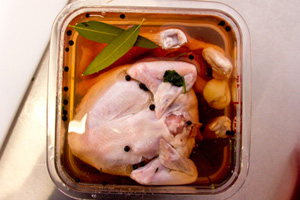Poultry Prep Tips – How to Make Your Bird Even More Delicious
Want to cook better poultry? Here are some prep tricks the pros use to help ensure a better finished dish.
Brine, Marinate, Bard, Air-Dry or Apply a Rub Ahead
None of these techniques are required, certainly, but they can help bring additional moisture, flavor and/or texture to poultry and are good tricks to have in your culinary arsenal. If your poultry is frozen, thaw it first.
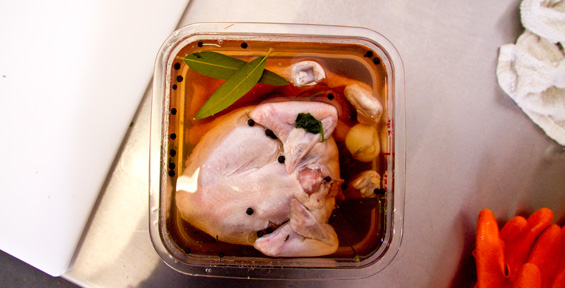
Brining helps the bird stay moist while cooking and infuses it with additional flavors. See how to brine poultry for the technique and a basic brine recipe.
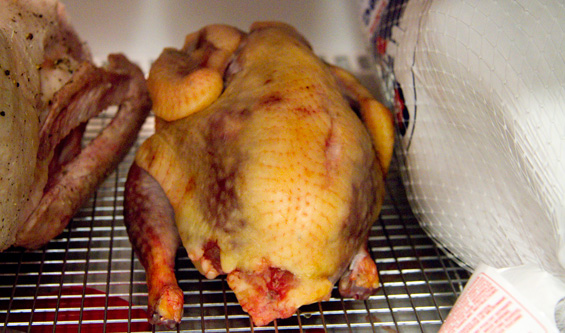
Air-Drying can intensify the natural flavors of the bird and helps promote crispy skin. This method is a great way to start poultry that will be glazed. First, unwrap your bird, rinse it, and dry off any surface moisture. Place it on a rack above a pan (to catch any drips). Put the bird & its rack-rest on the bottom shelf of your refrigerator and let it sit there for 1-2 days.
Air drying is particularly recommended for guinea fowl.
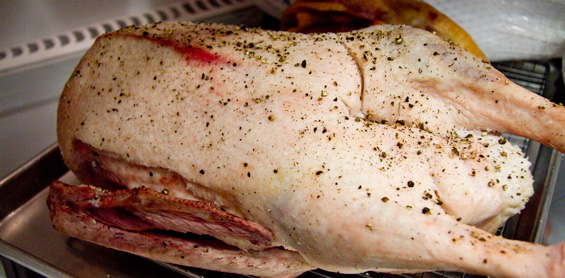
Salt Rubbing seasons the bird and promotes a nice crispy exterior. Just rub an unwrapped, dried-off bird all over with a layer of kosher or coarse sea salt (plus pepper or other ground spices if desired) and store it in your fridge for a few days as you would for air-drying. Rinse off the rub before cooking.
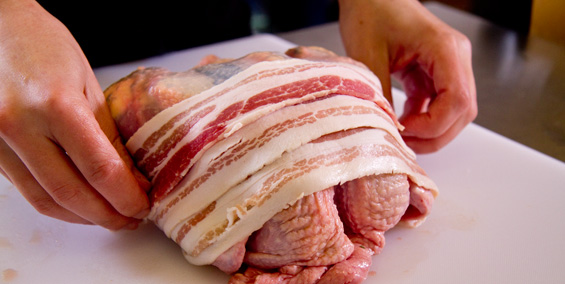
Barding (wrapping the bird with bacon, prosciutto, pancetta, etc) can help keep poultry (especially particularly lean poultry like guinea fowl) from drying out and impart extra flavor. Just apply strips of bacon (etc) to the top of the bird before roasting, and tie it down when trussing.
Like any large cut, whole birds have a lot of thermal mass and can take a while to go from cold to hot in the oven. Letting them come to room temperature before roasting will give you a better result.
Just remove them from the fridge an hour or so before cooking (depending on ambient temperature) and let them sit in a baking dish, roasting pan, or bowl on the counter (so they can’t get juices on anything) to help bring them to room temperature.
Like any large cut, whole birds have a lot of thermal mass and can take a while to go from cold to hot in the oven. Letting them come to room temperature before roasting will give you a better result.
Just remove them from the fridge an hour or so before cooking (depending on ambient temperature) and let them sit in a baking dish, roasting pan, or bowl on the counter (so they can’t get juices on anything) to help bring them to room temperature.

Trussing poultry (tying the wings and legs with butcher’s twine) can protect the wing tips and legs from overcooking or excessive browning when roasting whole. Different chefs use different trussing methods. See how to truss poultry for the ones we prefer.
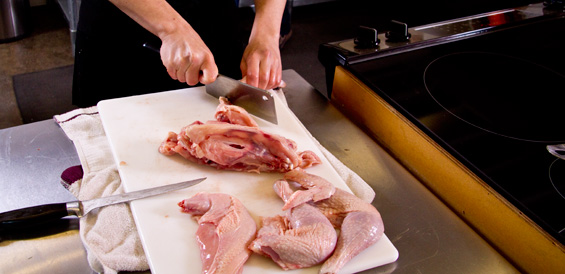
Whole birds aren’t just for roasting…they can also be processed into smaller cuts for all sorts of recipes. See How to Cut Up Poultry for a tutorial.
Once you’ve removed the breasts, legs and thighs, the bird still has more to give. The carcass can be simmered to make flavorful stock. Just trim off large pieces of excess fat and freeze until you have several carcasses saved up…then thaw and make your stock (how to make chicken stock, how to make duck stock).


